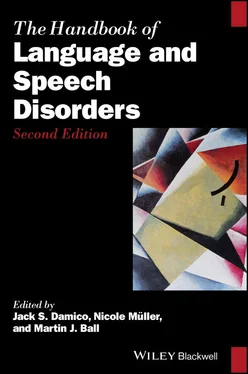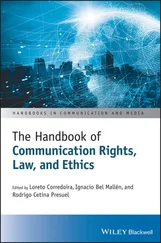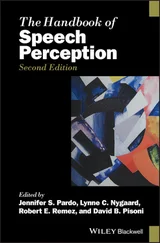The Handbook of Language and Speech Disorders
Здесь есть возможность читать онлайн «The Handbook of Language and Speech Disorders» — ознакомительный отрывок электронной книги совершенно бесплатно, а после прочтения отрывка купить полную версию. В некоторых случаях можно слушать аудио, скачать через торрент в формате fb2 и присутствует краткое содержание. Жанр: unrecognised, на английском языке. Описание произведения, (предисловие) а так же отзывы посетителей доступны на портале библиотеки ЛибКат.
- Название:The Handbook of Language and Speech Disorders
- Автор:
- Жанр:
- Год:неизвестен
- ISBN:нет данных
- Рейтинг книги:4 / 5. Голосов: 1
-
Избранное:Добавить в избранное
- Отзывы:
-
Ваша оценка:
The Handbook of Language and Speech Disorders: краткое содержание, описание и аннотация
Предлагаем к чтению аннотацию, описание, краткое содержание или предисловие (зависит от того, что написал сам автор книги «The Handbook of Language and Speech Disorders»). Если вы не нашли необходимую информацию о книге — напишите в комментариях, мы постараемся отыскать её.
Provides 26 original chapters which describe the latest in new research and which indicate future research directions Covers new developments in research since the original publication of the first edition Features in-depth coverage of the major disorders of language and speech, including new insights on perception, hearing impairment, literacy, and genetic syndromes Includes a series of foundational chapters covering a variety of important general principles, including labelling, diversity, intelligibility, assessment, and intervention
, Second Edition, is essential reading for researchers, scholars, and students in speech and language pathology, speech, language and hearing sciences, and clinical llinguistics, as well as active practitioners and clinicians.












